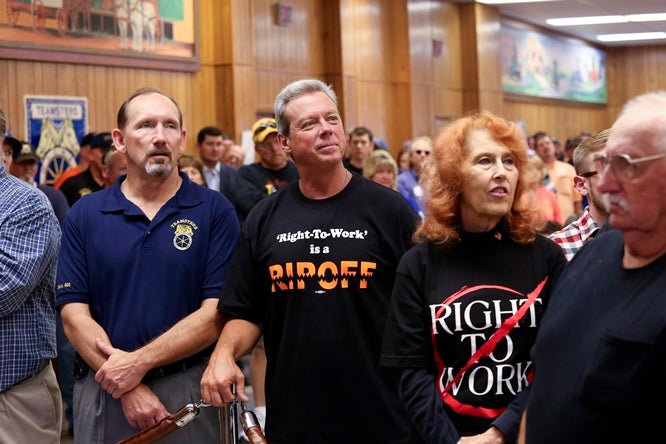Uncategorized
Missouri Rejects Right to Work

In a rare display of bipartisanship, members of the Missouri House of Representatives recently voted to sustain Gov. Jay Nixon’s veto of right-to-work legislation.
Sustaining the veto was a victory for working families and an embarrassing defeat for the groups pushing this anti-worker law.
Nixon vetoed House Bill 116 in June after the Missouri House and Senate passed it. Supporters of the bill needed a two-thirds majority vote to overturn Nixon’s veto. However, a coalition of Republicans and Democrats stuck to their principles and voted to keep Missouri free from the damaging impact right-to-work legislation would have on the state.
The House needed at least 109 votes to override the veto and they fell short, so right to work was successfully vetoed.
“This attempt by outside special interests to cut wages for workers would also reduce access to training, jeopardize public safety and weaken our entire economy,” Gov. Nixon said. “That’s why a strong bipartisan coalition of legislators continues to support my veto of this divisive legislation.”
“Today’s bipartisan action by the legislature to uphold my veto of this divisive, anti-worker bill is a victory for workers, families and businesses here in Missouri and across the country,” Gov. Nixon said. “I thank the members of the General Assembly, both Democrats and Republicans, who sent a clear message to the nation that Missouri will stand by its workers and oppose attempts by outside special interests to cut wages and weaken the middle class.”
General President Jim Hoffa joined hundreds of union members from across the state that turned out to support Gov. Nixon and his veto on Saturday, Sept. 12 at Local 41 in Kansas City, Mo.
“I would like to thank the state legislators who put aside their partisan differences and came together to uphold Gov. Nixon’s veto,” Hoffa said. “They recognized that right to work is wrong for working families and is wrong for the state of Missouri. This has been a true victory for all Missourians.”
Right-to-work states lag behind in wages, with workers averaging nearly $6,000 less annually. Eight of the 10 states with the lowest minimum wages and nine of the 10 states with the highest poverty levels are right to work.